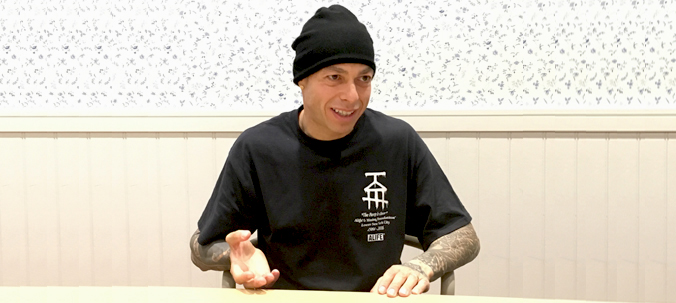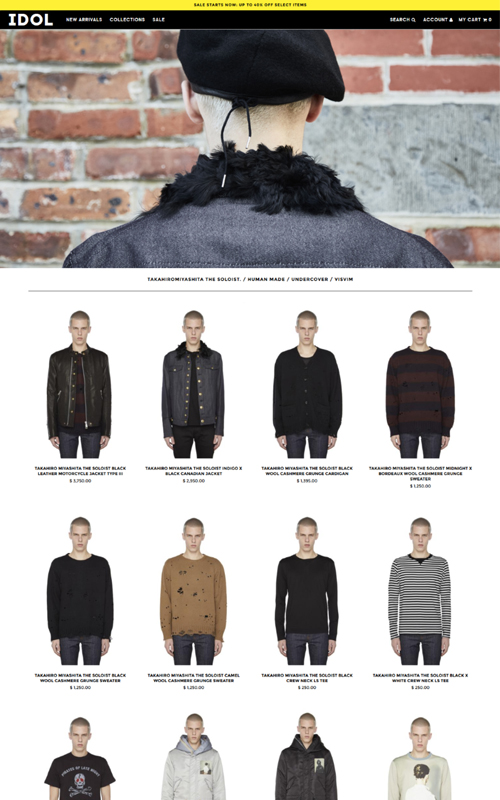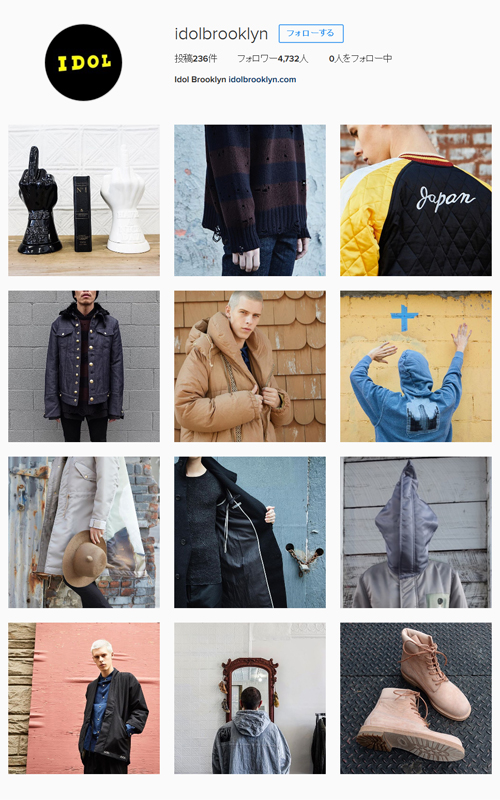Alex Kasavin
AmazonFWT 2017 S/S, Overseas guest interview, vol.1
“IDOL BROOKLYN”, Creative Director / Alex Kasavin
[ Website ] http://www.idolbrooklyn.com/
[ Instagram ] https://www.instagram.com/idolbrooklyn/
[ Facebook ] https://www.facebook.com/idolbrooklyn
Mr. Alex Kasavin, the Creative Director of “ IDOL BROOKLYN ”, a multi-brand menswear shop located in Williamsburg of Brooklyn, New York, was a guest to the Amazon Fashion Week TOKYO 2017 S/S, by invitation from JETRO. “IDOL BROOKLYN” is a shop that has core fans of their original selection, including many Japanese brands, such as Yohji Yamamoto、UNDERCOVER、HENDER SCHEME. We’ve asked him of his opinion on Japanese brands, buying criteria, and things he is particular about in his shop.
From the time your visit was decided upon, to the time you left for Japan, what kind of preparations did you make?
I’ve always wanted to visit Japan, so when JETRO invited me, I was very honored, and I couldn’t wait to come. Our shop carries many Japanese brands, so I’ve always hoped to actually visit the land that these brands were born in. I was also excited about meeting new designers.
What is your impression of your first visit to Tokyo?
I’m still in the middle of researching, but I’m quite overwhelmed by the energy of the youth towards fashion, especially that of the youth in Harajuku. To tell you the truth, I got lost and a young person, a complete stranger whom I asked for directions by chance, actually took me to my next destination. I was quite moved by this. It was also great to visit the flagship shops of the Japanese brands that we carry in our shop, and observe the customers that gather there.
Do you usually visit fashion weeks?
I sometimes visit men’s collections. People gather to fashion weeks from around the world, and there’s a lot of interesting new encounters, but from a buying point of view, I usually visit showrooms. Most brands are in the Paris showroom, so I usually discuss business there.
Please tell us about IDOL BROOKLYN.
IDOL BROOKLYN is a men’s select shop that opened in Brooklyn, New York, in 2014. In the merchandising of the items that we carry, we place value on items that have a sense of handmade artistic characteristics. Whether the brand makes runway announcements or is a street brand, doesn’t matter. If it has an unique attractiveness, I’ll buy it no matter what its name value. We see the clothing of the designers that we carry as art pieces with concept and spirituality, and we hope not only to sell it as a product, but also to convey its artistic sensibility to our customers.
In your shop, the ratio of Japanese brands seems to be higher than European or American brands? Is this so?
I’m not buying because they are Japanese brands, but we’ve carried Japanese brands from the time we opened our shop, and the ratio of Japanese brands have grown without even realizing it. It’s funny because my staff and I were just talking about that the other day, and we ourselves were surprised at the high ratio of Japanese brands (laugh). It’s not intentional. I thinks it’s because the message that Japanese brands have matches the message that we’d like to express.
How is the reaction of your customers to Japanese brands? Do they sell well?
Japanese brands are highly skilled in technique, very constructed with a beautiful silhouette, and extremely original. But in the same way that we do not buy just because it is a Japanese brand, our customers don’t pick up items conscious of whether it is a Japanese brand or not. Japan is full of wonderful textiles and fabulous craftsmen skills, and I think that those brands that incorporate such Japanese skills well in their creations, are able to differentiate themselves from others, even in American and European shops.
Are there any changes in recent customer behavior that you have noticed in particular?
The largest difference is that times have changed from choosing by brand name, to choosing by the product itself. This may be an extreme example, but in my generation, we used to wear clothing by brand name, and when discussing what we bought lately among friends, brand names were always mentioned. But nowadays, there is a predominant increase in people being concerned of the item itself, instead of the brand name. Now, people talk about the item and its details, when talking about things they bought recently with friends.
What is your opinion on the relationship between influencers and followers, in fashion?
Each city has its own group of original influencers, and there are followers that are influenced by them. There’s an interesting phenomenon of influencers jumping out of trend, and creating diverse styles of their own; there is a New York look in New York, a Paris look in Paris, and of course a Tokyo look in Tokyo. And this can be seen around the world. Because of this, I think the speed of trend transitions in the fashion industry is speeding up even more. So much so that, by the time a trend analysis comes out, the trend has already changed.
Were there any brands that caught your eye at the Amazon Fashion Week TOKYO?
This time, I planned a business negotiation schedule around Tokyo brands that I cannot see in Paris. I’m especially interested in BED j.w. FORD I’ve never seen them before, but I’m very attracted. The compatibility between our shop, our customers and Japanese brands is very good, and I’m very hopeful that the encounters of this visit will blossom into fabulous connections.




